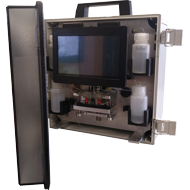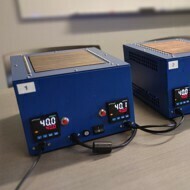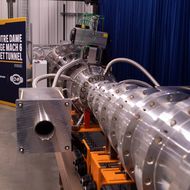Research
The Engineering and Design Core Facility (EDCF) serves faculty, staff, and student researchers across multiple disciplines. See highlights of research projects the facility has supported below:
HEP Scanner
The High Energy Physics (HEP) Scanner project was created as an upgrade to a capillary fluorescence scanning instrument, which can be used in high-energy physics experiments. The instrument scans the length of a glass capillary with ultra-violet light and measures the fluorescence uniformity from a solution contained in the capillary. The EDCF provided the electrical, mechanical, and software engineering and prototyped the scanner.
iLocater
iLocater is an ultra-precise planet-finding spectrometer that operates at infrared wavelengths. The iLocater acquisition camera collects light from an eight meter diameter telescope and focuses it into a six micron single mode optical fiber while the telescope tracks a star's movement. The EDCF played many roles during the development of this instrument, including mechanical and electrical engineering and control software development.
Lumen
The Lumen Watch, which was developed for a student, was designed to determine ultra-violet solar exposure while tracking the watch's orientation to the sun. The EDCF provided the electrical and mechanical design and a prototype of the watch.
RapiSense
The RapiSense instrument, now in its 4th generation, was designed to automate the process of DNA detection in microfluidic samples. The instrument injects multiple solutions to a sensor and collects data from an amperometric scan of the sensor. The EDCF provided the electrical, mechanical, and software design for the Linux-based, touchscreen, instrument.
Thermal Grill
The Thermal Grill device was built for the Psychology department to demonstrate a sensory illusion. The device regulates the temperature of alternating copper bars. When all bars are at 20ºC, they feel cool. When all bars are at 40ºC, they feel warm. For some people, when the temperature of the bars are interlaced at 20ºC and 40ºC, they feel pain. Temperatures that normally feel warm or cool feel painful when the temperature of the bars is alternating. The EDCF provided the simplified, standalone design, and prototyped four of the devices.
Wind Tunnel
Notre Dame is developing the Large Mach 6 Quiet Hypersonic Wind Tunnel with the Air Force Office for Scientific Research to advance the science of hypersonic vehicles. The EDCF created the detailed mechanical design of the converging/diverging nozzle assembly.





